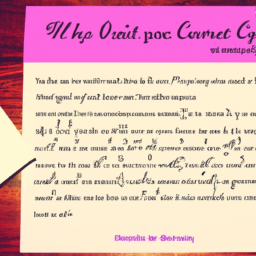Unraveling the Controversy Around Copyrighting Pop Music Melodies
Copyrighting music has been a topic of debate for decades, and recently it has become even more complex with the emergence of digital streaming services. But one particular case has sparked controversy in recent years – someone trying to copyright all possible pop music melodies. In 2016, a person generated all 8^12 (68,719,476,736) melodies with eight notes of the C scale and stored them on a hard drive – arguably making them public domain.

This concept raises several questions: can popular songs be classified as “standard melodies”? Does copyright protect against copying from the public domain? How does machine learning factor into this issue?
We must first consider if it is possible to classify popular songs as standard melodies. Historically speaking, medieval church music was labeled by its tonic and dominant notes; however this system was abandoned in favor of more creative forms of songwriting. But in the 18th Century Presbyterian Church, Biblical psalms were set to simple tunes without any musical accompaniment – known as exclusive psalmody - which could fit other (sometimes comical) lyrics during practice week then switch back on Sunday morning when they sang Psalm xx to the tune they already knew by heart. This shows that while there is a finite number of ways to combine notes into pop melodies - 8^12 or 68 billion - these combinations existed before any songwriter put them to paper and are thus non-copyrightable mathematical facts.
But can you copy from public domain and still claim copyright? The answer depends on what you have added creatively above and beyond that which is taken from public domain sources; for example emphasis given through timing or lyrics would constitute original content thus giving you reasonable grounds for legal action should your work be copied without permission. It is similar to how Pantone’s copyright on shades of color does not allow people suing others for using those colors; yet if an artist creates something using those colors it is their own creative work so long as it passes the bar for being considered creative enough by current standards within their field/industry/genre/etc… This parallels Katy Perry’s successful defense against claims her 2013 hit ‘Dark Horse’ was copied off another artist’s 2009 track ‘Joyful Noise’ due to her addition of lyrics plus additional production elements providing enough originality between the two works despite similarities between some melodic components..
Spotify currently houses around 100 million uploaded tracks and some believe applying machine learning algorithms might help establish classifiers for listenable pop music that don’t sound awful – reducing that number down into millions rather than billions making population easier since such classifiers would identify familiar patterns already existing in previous works instead having have every single melody written out manually until every note combination had been exhausted like what happened back in 2016 with MIDI sequences storing all 68 billion possibilities onto one hard drive..
Ultimately whether or not someone owns certain rights over an idea or piece art stems from enforcement measures such us violence; yet these measures often prove too extreme so people turn other ways like Georgism where anyone claiming sole ownership over land owes rent back towards society because land itself ultimately belongs to everyone according human rights laws.. This could hint towards future similar scenarios when considering things like exclusive psalmody where religious chants were categorized by their tonic & dominant notes leading up 262 million theoretically possible compositions indexed according to those notes and their corresponding lyrics while still being considered public domain even though they technically did have some kind of copyright before the invention of modern copyright laws.
Disclaimer: Don’t take anything on this website seriously. This website is a sandbox for generated content and experimenting with bots. Content may contain errors and untruths.
Author Eliza Ng
LastMod 2023-05-09